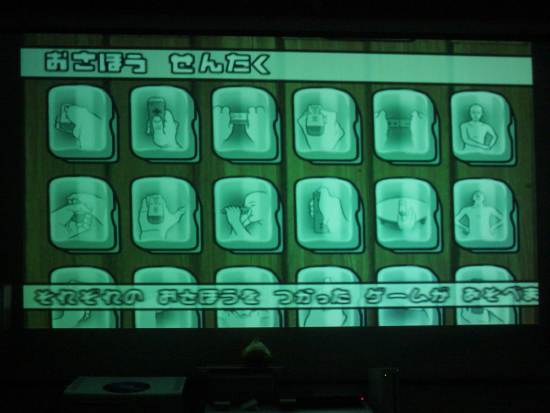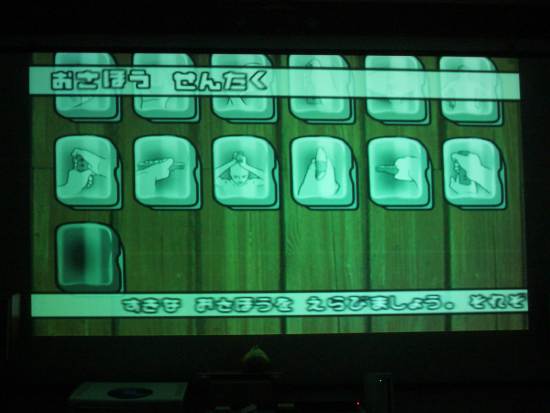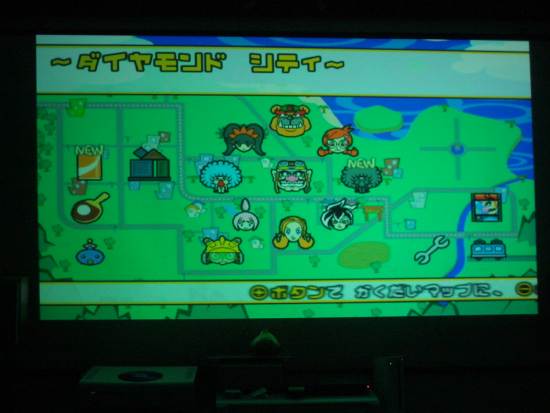A public service message.
In the interest of sharing gaming knowledge with those not lucky enough to be playing Odoru: Made in Wario (WarioWare: Smooth Moves to those of you in the English-speaking world), I present the following information and pictures.
If you like being surprised by your games, stop reading now!
Wario (the game, not the character) has 19 different control schemes. So far I’ve unlocked 18 of them. Here are a couple photos showing the in-game “descriptive icons” (for lack of a better term) of the ones I’ve unlocked:


There are 205 different microgames, and I’ve unlocked 115 of those.
Clearly, I’ve still got a ways to go.
The main interface of the game is a map of Diamond City, shown here:

As you can see, I’ve got 10 different characters (the ones in the center of the map) unlocked. Each one has their own set of levels and for the most part they all tend to use a variety of control schemes.
The icons around the edges of the map represent various things – settings, return to main menu, etc. The ping-pong paddle is a stand-alone game, and not a set of levels. The character in the bottom-left corner is your link to the practice area. You can practice individual levels, a single character’s stages or the stages of a specific control scheme. As with previous Wario games, you can only pratice stages you’ve unlocked.
Thankfully, you don’t have to have passed them in the game to practice them.
Just seeing them, even if you fail is enough to get them in the practice area.
The movie theater (middle-right) is for viewing the various character intros and conclusions.
I’ll end things there, but will be happy to answer any questions (either here in comments – or back on GameFaqs, for those of you who followed the link to here) you might have.
So…any questions? ^.^

Comments are closed.